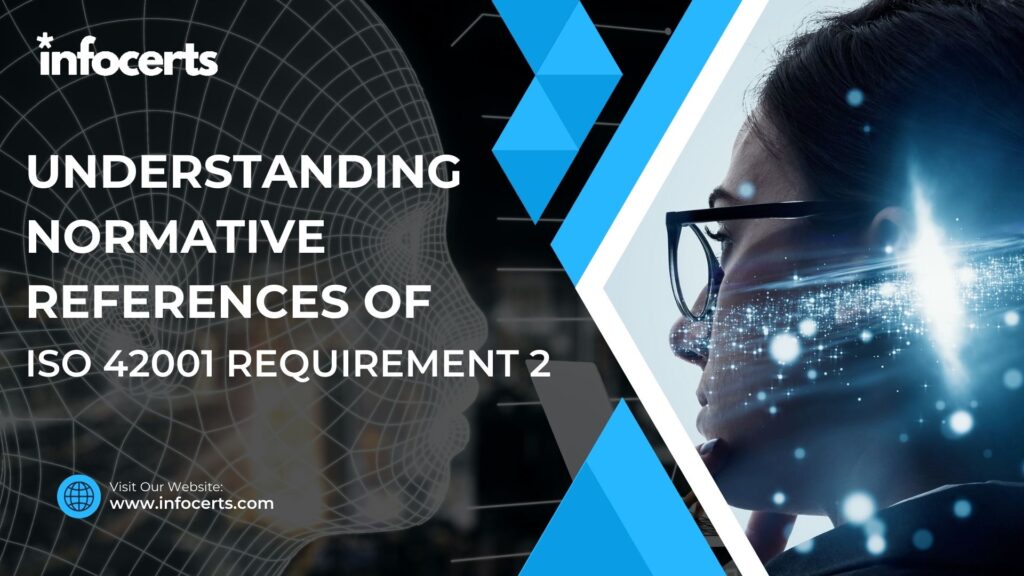Certainly! Let’s delve into the essential aspect of ISO/IEC 42001: Normative References for Requirement 2. In this blog post, we’ll explore what normative references are, their significance, and how they impact the implementation and auditing of an Artificial Intelligence Management System (AIMS).
What Are Normative References?
Normative references play a pivotal role in ensuring consistency and reliability across standards. These references are external documents that provide essential context and guidance for interpreting and implementing specific requirements within ISO/IEC 42001. Think of them as the building blocks that underpin the standard.
Why Are Normative References Important?
- Consistency: By relying on recognized and industry-standard sources of information, normative references ensure that interpretations remain consistent across different organizations.
- Reliability: When implementing ISO/IEC 42001, organizations can trust that the referenced documents provide a solid foundation for their AI management system.
- Alignment: Normative references align the standard with other relevant frameworks, enhancing overall coherence.
Examples of Normative References in ISO 42001
Let’s explore some examples of normative references within ISO/IEC 42001:
- ISO/IEC 42001 Requirement 3: Terms and Definitions: This section relies on specific definitions from external sources to ensure clarity and precision.
- ISO/IEC 42001 Requirement 4: Context of the Organisation: Understanding the internal and external factors influencing an organization’s AI management system is crucial1.
- ISO/IEC 42001 Requirement 5: Leadership: Normative references guide leadership roles in shaping AI governance and responsible development.
- ISO/IEC 42001 Requirement 6: Planning: Here, references aid in strategic planning for AI deployment.
Implementation and Auditing Techniques
When implementing ISO/IEC 42001, consider the following techniques:
- Thorough Research: Understand the referenced documents thoroughly. Dive into their content to grasp the nuances.
- Mapping: Map the requirements of ISO/IEC 42001 to the relevant sections of the referenced documents.
- Auditing: During audits, verify compliance by cross-referencing against the normative references.
Conclusion
Normative references are the invisible threads weaving together the fabric of ISO/IEC 42001. By embracing them, organizations can build robust AI management systems that adhere to ethical principles, security, and transparency. So, let’s appreciate these references as the silent architects of responsible AI deployment!
FaQs:
- What is ISO/IEC 42001 Compliance?
- What is an Artificial Intelligence Management System (AIMS)?
- What Are the Core Concepts of the ISO/IEC 42001 Standard?
- How Does ISO/IEC 42001 Address Ethical AI?
- How Can Organizations Implement ISO/IEC 42001?
——————————————————————————————————————–
Infocerts, 5B 306 Riverside Greens, Panvel, Raigad 410206 Maharashtra, India
Contact us – https://www.infocerts.com

